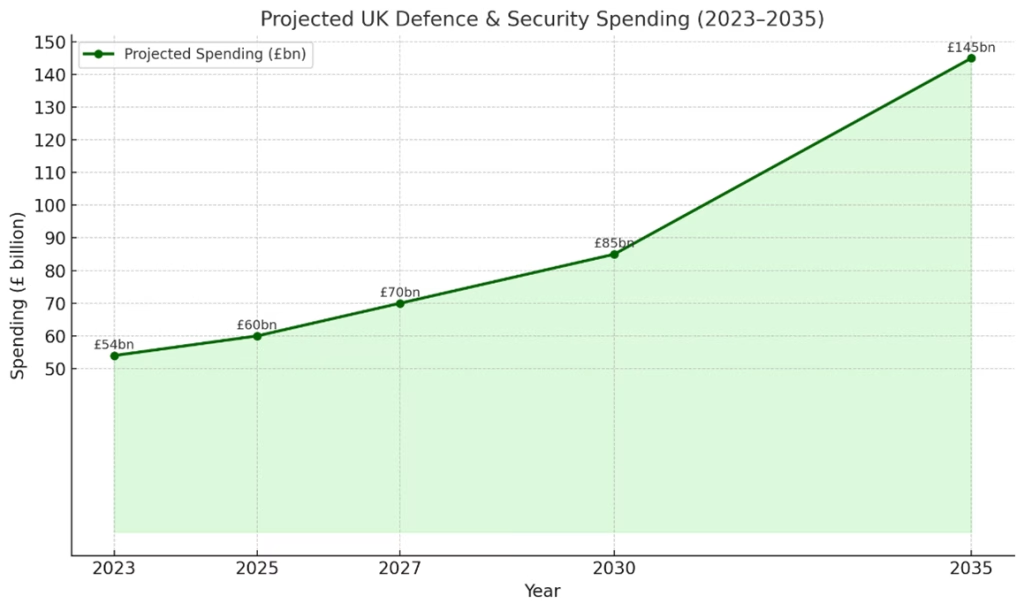
How Scenario-Based Training Builds Real Operational Readiness
We explore why scenario-based training delivers superior results for operational roles and how immersive VR technology is removing those barriers.

Chief Technology Officer,
Metaverse VR
These announcements mark not just a policy shift, but a signal of intent for the Labour Government within the new era of war in Europe.
With a commitment to increase defence and national security spending to 5% of GDP by 2035, the UK Government has set out a bold vision – one attempts to bring major transformation across procurement, innovation, and industrial resilience.
For SMEs, long operating at the periphery of major defence contracts, this may well mark the start of a more central role.
But alongside the promise, there are some practical realities to prepare for.

The scale of funding is significant. Defence spend aims to grow from approximately 2.3% to 5% of GDP over the next decade, which is an uplift of £80–90 billion annually.
Encouragingly, a notable portion is set aside for areas where SMEs have historically added value to innovation, supply chain resilience, and regional industrial support.
This presents a strong growth signal and potential reasons to be optimistic.
But it would be unwise to overlook the timeframes involved. Even with procurement reform on the agenda, this is not an overnight shift. Defence contracts remain complex, and delivery cycles long. For many businesses, it may take up to three years before investment linked to the SDR translates into actual revenue and significant investment may take over a decade.

It is particularly welcome to see the SDR commit 5% of total defence spending to R&D, and 10% of equipment budgets to innovation – including extended reality and simulation.
The launch of the Defence Innovation Agency and a £400 million Defence Innovation Fund both suggest serious intent to back this ambition with funding.
These reforms are accompanied by measures designed to reduce friction for SMEs – including simplified contracting routes for opportunities under £5 million and £50 million.
That could signal a real shift away from SMEs acting purely as subcontractors to large primes, and towards more direct engagement.
Still, access won’t be automatic. Numerous frameworks will have to be joined and monitored. Requirements around security, compliance, and scale remain high. And they are rising.
Cyber Essentials Plus certification, ITAR compliance, and robust governance will be front and centre, and any firm unfamiliar with defence may find they need to get up to speed fast.
The SDR will commit 5% of total defence spending to R&D and 10% of equipment budgets to innovation
A new Defence Exports Office is also being established, aimed at supporting SMEs with global scale-up and access to overseas markets.
With international collaborations like AUKUS and GCAP progressing, this could open doors.
Large primes still dominate global supply chains, so SMEs will need to be agile, strategic, and visible to make gains here.
Meanwhile, the SDR is likely to intensify competition for technical talent – particularly in high-demand areas such as AI, simulation, and advanced manufacturing.
As the MoD and primes ramp up recruitment for suitably qualified experience people, SMEs will need to be selective in the roles they pursue, and smart in how they retain talent.
At Metaverse VR, we’ve noticed the pause in spending and decision-making since the 2024 General Election period, as the sector awaited clarity from the SDR.
Now the clarity is finally here, the stage is set for regeneration of the UK’s defence industrial base – but SMEs must be realistic. The opportunities are real, but so are the demands. The race has just turned into a marathon.
Those best placed to benefit will be organisations who can scale without losing agility, meet the rising compliance bar without slowing down, and deliver capability at pace, securely and smartly.
This could be a defining decade for the UK’s SME defence community.
The question is: are we ready? Let me know in the comments below.
*Independent analysis of UK government defence spending conducted by Paul Pine based on current published plans.

We explore why scenario-based training delivers superior results for operational roles and how immersive VR technology is removing those barriers.

VR represents a fundamental shift in how we think about preparation for conflict. The most capable forces of the next decade will be those investing in VR training.

Explore how VR training is reshaping UAV skill development. In light of the SDR, discover why immersive simulation is now critical for defence and commercial drone teams.